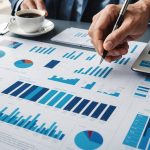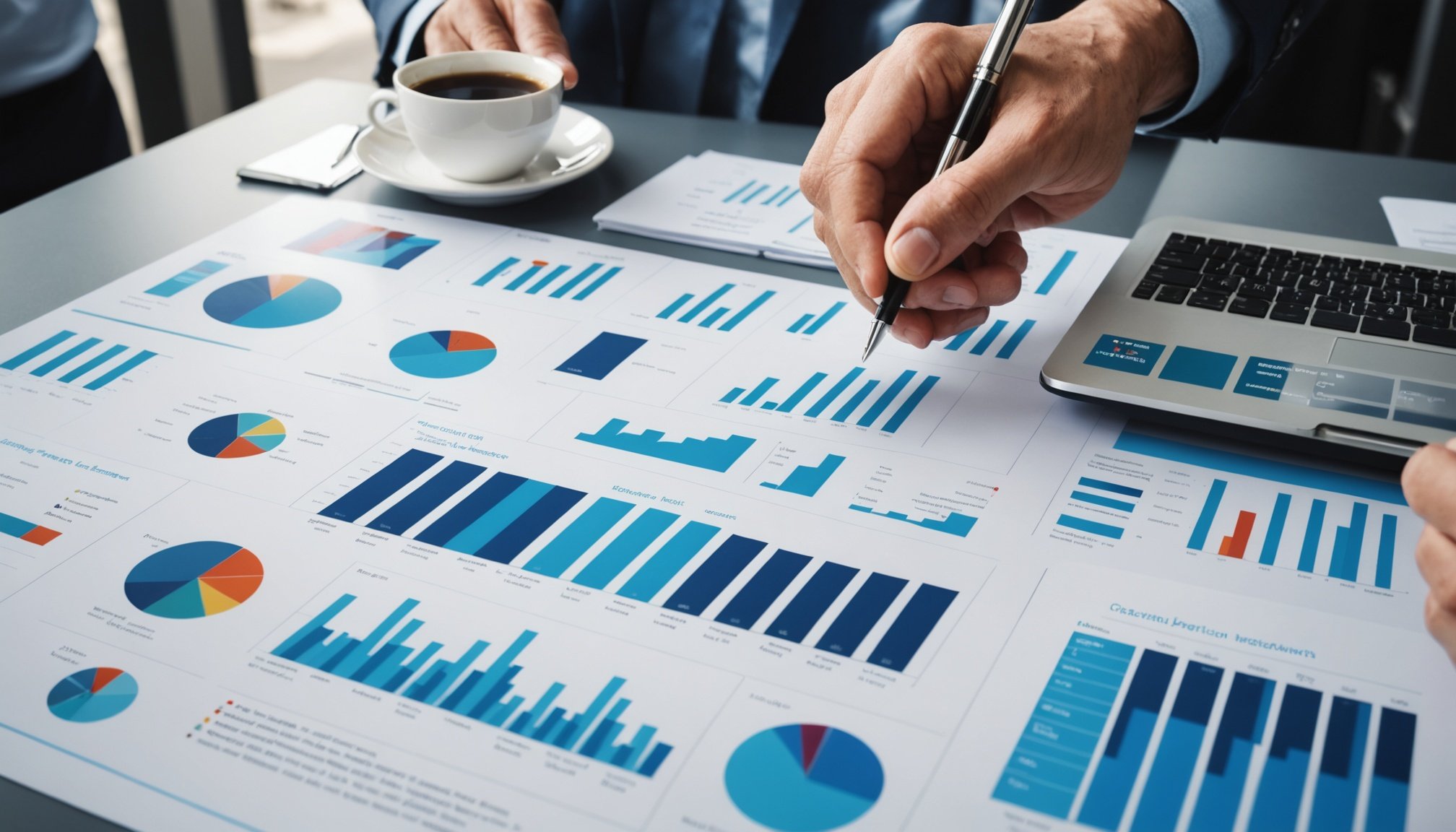Unlocking Insight: How Data Visualization Transforms Organizational Decision-Making
In the modern business landscape, data is the lifeblood of decision-making. However, the sheer volume and complexity of this data can be overwhelming, making it difficult for organizations to extract meaningful insights. This is where data visualization steps in, transforming raw data into actionable insights that drive informed decision-making.
The Growing Importance of Data Visualization in Business
Data visualization has become an indispensable tool for businesses today, and its importance cannot be overstated.
Topic to read : How do organizations bridge the gap between it and business teams for enhanced collaboration?
Data Complexity and the Need for Clarity
As businesses generate increasingly large amounts of data, managing and interpreting this data has become a significant challenge. Data visualization provides a clear and concise way to present complex data, making it easier for decision-makers to draw conclusions. For instance, a study by 3M found that the human brain processes visuals 60,000 times faster than text, highlighting the power of visual representation in simplifying intricate datasets[1].
Increased Decision-Making Speed
In today’s competitive business environment, the ability to make informed decisions quickly is crucial. Data visualization allows stakeholders to gain insights in real-time, empowering them to act swiftly on critical business issues. Real-time data visualization, in particular, offers businesses a continuous overview of their key performance indicators (KPIs), enabling them to respond promptly to changes in market conditions, customer behavior, or operational performance[2].
Topic to read : Unlocking success: the advantages of open-source software in tech projects
Improved Communication and Collaboration
When data is presented visually, it is easier for teams and stakeholders to communicate insights effectively. Whether it is for internal teams or external clients, data visualization fosters better collaboration and understanding. Visualizations such as dashboards, charts, and graphs make complex data accessible to a broader audience, including non-technical stakeholders, thereby bridging the gap between technical experts and non-experts[1].
How Data Visualization Enhances Business Insights
Data visualization is more than just a tool; it is a powerful resource that transforms complex data into easily interpretable insights.
Simplifying Complex Data
Data visualization simplifies intricate data by presenting information in a visually appealing and easily digestible format. This increased accessibility ensures that the data can be quickly interpreted, leading to faster and more effective decision-making. For example, visualizing sales data can reveal seasonal fluctuations, growth opportunities, or underperforming areas, enabling businesses to make proactive decisions in areas like inventory management, marketing strategies, and resource allocation[1].
Enhancing Pattern and Trend Identification
Raw data often hides important insights, but data visualization tools make it easier to detect patterns, trends, and anomalies. Techniques such as clustering and aggregation distill large datasets into digestible segments, spotlighting anomalies or patterns. Predictive overlays, like forecasting lines or probability bands, offer future-oriented insights, aligning with strategic goals[2].
Facilitating Real-Time Monitoring
Dashboards and real-time data visualizations offer businesses a continuous overview of their KPIs. By monitoring data in real time, companies can quickly respond to changes, ensuring that decision-makers have the most up-to-date information available. This real-time monitoring is particularly beneficial in operational settings, such as logistics and manufacturing, where immediate responses to anomalies can significantly impact efficiency and productivity[2].
Techniques for Effective Data Visualization
To maximize the benefits of data visualization, several techniques and tools can be employed.
Using Interactive Dashboards
Interactive dashboards empower users to drill down into specific data layers, encouraging informed decisions. These dashboards can be customized to focus on pertinent information, ensuring that users can quickly identify actionable insights. For instance, a sales dashboard might include filters for region, product, and time period, allowing decision-makers to analyze sales performance from various angles[2].
Combining Data Visualization and Predictive Analysis
Integrating predictive analysis with visualization techniques amplifies real-time decision-making capabilities. By layering predictive models over existing datasets, businesses can identify trends or future outcomes. Advanced visualization types like decision trees or probability graphs illustrate scenarios, enabling businesses to anticipate changes and respond strategically[2].
Real-Time Data Visualization: A Game Changer for Operational Decisions
Real-time data visualization is particularly powerful in enhancing operational decisions.
Instant Insights and Swift Actions
Real-time data displays deliver instant insights, enabling swift and precise operational decisions. By visualizing live data streams, these displays help monitor ongoing processes and identify potential issues before they escalate. For example, logistics companies can track fleet movement in real time to optimize routes, saving time and resources[2].
Enhancing Collaboration
Real-time displays enhance collaboration by providing teams with a unified, up-to-date data view. This real-time awareness facilitates better decisions, improves productivity, and reduces risks across various operations. In manufacturing facilities, real-time displays can monitor equipment performance, ensuring immediate response to anomalies and maintaining optimal operational efficiency[2].
Practical Insights and Actionable Advice
To fully leverage the power of data visualization, organizations should consider the following practical insights and actionable advice.
Identifying Critical Metrics
When designing real-time data displays, it is crucial to identify the most critical metrics to include. This ensures the display addresses specific operational needs and provides relevant information. For instance, a customer service dashboard might focus on metrics such as response time, resolution rate, and customer satisfaction scores[2].
Using Visual Elements Effectively
Visual elements like charts, graphs, and color coding should be used to represent data intuitively. User-friendly dashboards with customizable layouts enable users to focus on pertinent information. Prioritizing performance by ensuring the system processes data with minimal lag is also essential[2].
Implementing Alerts and Notifications
Incorporating alerts or notifications for key thresholds or anomalies drives prompt action. For example, a sales dashboard might alert managers when sales figures drop below a certain threshold, enabling them to take immediate corrective actions[2].
Benefits of Data Visualization in Business
The benefits of data visualization in business are multifaceted and far-reaching.
Faster Decision Making
Data visualization accelerates decision-making by presenting data in a clear and concise manner. Humans process visuals better than tedious tabular forms or reports, enabling decision-makers to take action quickly based on new insights. This speed is critical in today’s fast-paced business environment, where timely actions can avert losses and capitalize on market opportunities[3].
Making Sense of Complicated Data
Data visualization helps business users gain insights into vast amounts of data, recognizing new patterns and errors. This process drives the business forward by highlighting areas that indicate red flags or progress. For instance, visualizing customer behavior data can reveal trends that inform marketing strategies and improve customer engagement[3].
Enhancing Data Accessibility
Visual representations make complex data accessible to a broader audience, including stakeholders without technical expertise. By simplifying data, businesses empower everyone from leadership teams to front-line employees to engage with insights and make data-driven choices. This accessibility fosters cross-departmental collaboration and ensures that all employees can contribute to decision-making processes[1].
Real-World Applications and Success Stories
Data visualization is not just a theoretical concept; it has real-world applications that have transformed various industries.
Manufacturing and Logistics
In manufacturing, real-time data visualization helps monitor equipment performance and identify potential issues before they escalate. For example, a company like General Electric uses real-time data visualization to monitor the performance of its industrial equipment, ensuring immediate response to anomalies and maintaining optimal operational efficiency[2].
Healthcare
In healthcare, data visualization can be used to track patient outcomes, identify trends in disease spread, and optimize treatment plans. For instance, the Centers for Disease Control and Prevention (CDC) uses data visualization to track the spread of diseases, enabling public health officials to make informed decisions about resource allocation and intervention strategies.
Challenges and Future Directions
While data visualization offers numerous benefits, there are also challenges and areas for improvement.
Lack of Qualified Personnel
One of the significant challenges is the lack of qualified personnel with the skills to create and interpret data visualizations. Organizations need to invest in training and hiring professionals who can effectively use data visualization tools[4].
Resistance to Change
There can be resistance to adopting data-driven decision-making within organizations. Changing the culture to one that values data-driven insights requires time and effort but is essential for leveraging the full potential of data visualization[4].
Data visualization is a powerful tool that transforms complex data into actionable insights, enhancing decision-making, communication, and business performance. By simplifying complex information, identifying patterns and trends, and facilitating real-time monitoring, data visualization empowers organizations to make informed, data-driven decisions.
As Dona M. Wong, author of “The Wall Street Journal Guide to Information Graphics,” aptly puts it, “The goal of data visualization is to communicate information clearly and efficiently.” By embracing data visualization, businesses can unlock the full potential of their data, drive growth, minimize risks, and stay ahead in a competitive market[5].
Table: Benefits of Data Visualization
| Benefit | Description | Example |
|---|---|---|
| Faster Decision Making | Accelerates decision-making by presenting data clearly. | Visualizing sales data to identify trends and make quick decisions. |
| Simplifying Complex Data | Transforms intricate data into easily interpretable insights. | Using dashboards to simplify sales performance data. |
| Enhancing Pattern and Trend Identification | Detects patterns, trends, and anomalies in data. | Identifying seasonal fluctuations in sales data through visualizations. |
| Facilitating Real-Time Monitoring | Provides continuous overview of KPIs for swift responses. | Monitoring equipment performance in real time in manufacturing. |
| Improving Data Accessibility | Makes complex data accessible to a broader audience. | Using visualizations to communicate insights to non-technical stakeholders. |
| Boosting Engagement | Captures attention and improves retention through visually engaging formats. | Creating memorable and impactful presentations using data visualizations. |
| Supporting Predictive Analysis | Helps forecast future trends and outcomes. | Layering predictive models over existing datasets to anticipate changes. |
Detailed Bullet Point List: Techniques for Effective Data Visualization
- Identify Critical Metrics: Focus on the most important metrics that address specific operational needs.
- Example: A customer service dashboard focusing on response time, resolution rate, and customer satisfaction scores.
- Use Visual Elements Effectively: Employ charts, graphs, and color coding to represent data intuitively.
- Example: Using bar charts to compare sales performance across different regions.
- Implement Interactive Dashboards: Allow users to drill down into specific data layers for deeper insights.
- Example: A sales dashboard with filters for region, product, and time period.
- Combine Data Visualization and Predictive Analysis: Layer predictive models over existing datasets to identify future trends.
- Example: Using decision trees or probability graphs to illustrate future scenarios.
- Ensure Real-Time Data Processing: Minimize lag in data processing to ensure real-time insights.
- Example: Implementing real-time data streams in logistics to optimize routes.
- Incorporate Alerts and Notifications: Set up alerts for key thresholds or anomalies to drive prompt action.
- Example: Alerting managers when sales figures drop below a certain threshold.
- Test and Refine: Continuously test and refine data visualizations to ensure they remain effective and adaptable.
- Example: Iterative improvements based on user feedback to enhance dashboard usability.






